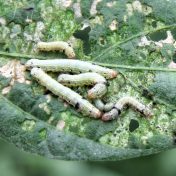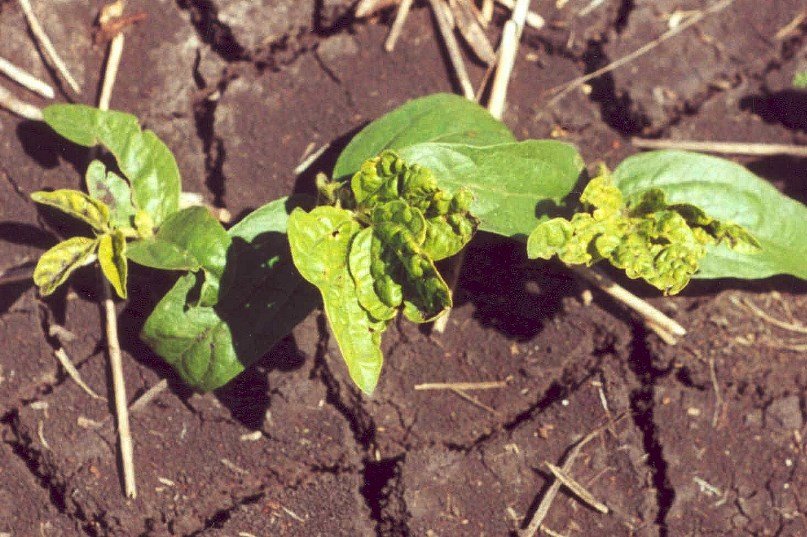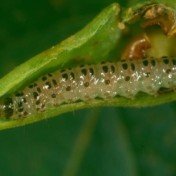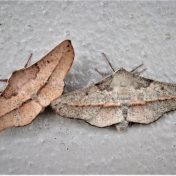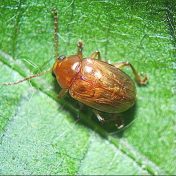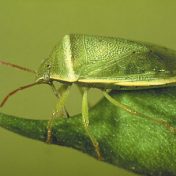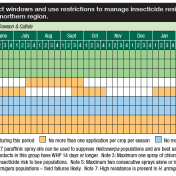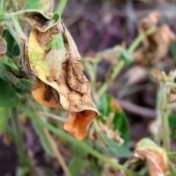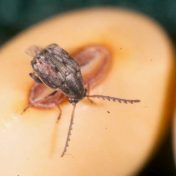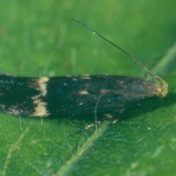Update (20 April): There are reports that cluster caterpillars are also switching from leaf to pod feeding in maturing crops in the Mackay region, with a report of 5-10 larvae per square metre in many crops. Growers and consultants in all coastal regions are urged to check their crops for late season cluster caterpillars. Reports have just come to hand… Read more »
Leafhoppers (also known as jassids) and seedling thrips are extremely abundant in Central Queensland this summer. The vegetable leafhoppers (Austroascra viridigrisea) are very much an ‘in your eye’ pest, with swarms of the small (3mm) bright green critters flying up when disturbed in-crop. In contrast, the cotton seedling or cereal thrips (Thrips tabaci) are hiding out of sight, down in… Read more »
Observations from recent Pulse Check field days in CQ Bean podborer (Maruca vitrata) and beet webworm (Spoladea recurvalis) are on the move in Central Queensland (CQ) mungbean crops. While both species may also be active in other mungbean regions, bean podborer is most likely to occur in coastal (e.g. the Burdekin) and subcoastal (Biloela, Kingaroy) regions. Bean podborer is a… Read more »
A plague of a native geometrid moths (Antictenia punctunculus – no common name) has visited southern Queensland, with huge numbers of moths reported. The species belongs to the twig looper family (Family Geometridae) and occurs in Queensland, New South Wales and the ACT. The moths have a 35-40 mm wingspan and distinctive colour pattern. The adults are a greyish brown… Read more »
Rhyparida sp. (swarming leaf beetles) have been reported in some Burdekin soybean crops. While the risk of outbreaks has declined as leaves dry off, growers and consultants are reminded to keep a lookout for this sporadic but sometimes very damaging pest. Monolepta sp. (redshouldered leaf beetles) have also been observed in some crops. What to look for Dead leaves are… Read more »
One of the revelations for entomologists Hugh Brier and Trevor Volp during their recent trip to the Burdekin was that northern redbanded shield bugs (RBSB) (Piezodorus oceanicus) appear to be pale in comparison to their southern counterparts. In south east Queensland, females have a red (or pink) transverse band across their ‘shoulders’. In samples collected from Kingaroy and Bundaberg in… Read more »
Recent reports have surfaced that best practice pest management guidelines are not always being followed in winter and spring-planted mungbean and soybean crops. There are reports of some crops in the Burdekin being sprayed unnecessarily for well-below threshold pest populations, and/or being sprayed with no regard for the GRDC’s widely publicised Insecticide Resistance Management Strategy (IRMS) for Helicoverpa armigera. Similar… Read more »
UPDATE (1 October 2019): High numbers of moths are still being reported in this region. Continue to check soybean crops for this pest. Reports have come in of major soybean moth activity in winter-planted soybeans in the Burdekin and Mackay regions. Some of the outbreaks caught all concerned by surprise, and one report came from a crop barely 10 days… Read more »
Outbreaks of Bruchidius mackenziei (unofficially called the soybean bruchid) have been reported recently in soybean crops in the South Burnett and North Queensland. The bruchids were detected at harvest and postharvest, their timing matching previous reports of this pest from the Darling Downs and Burnett in 2009/10. Bruchidius mackenziei is a native bruchid that is most likely not a true… Read more »
Significant soybean moth flights have been observed recently in some coastal Burnett soybean crops. Little damage has been observed to date, but high numbers of adult moths are an early warning sign of potential severe defoliation. Soybean moth is usually a minor soybean pest but in spasmodic major outbreaks, larval populations can exceed 1,000 per square metre. Identification Soybean moths… Read more »
